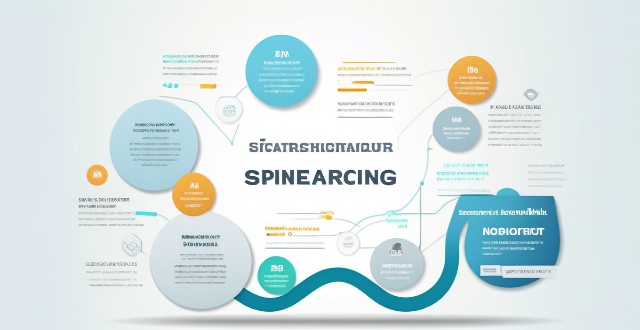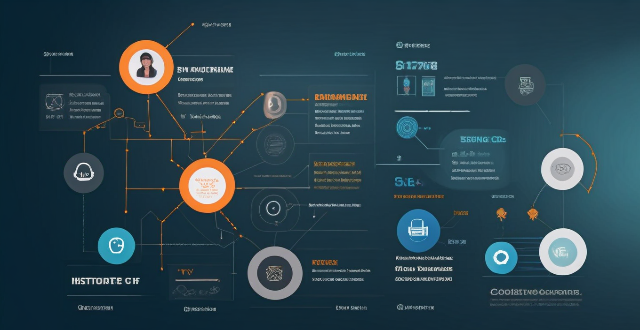Sports Marketing

How do you create an effective sports marketing strategy ?
Creating an effective sports marketing strategy requires a deep understanding of the target audience, the sports industry, and the brand's goals. Here are some steps to follow: 1. Identify the Target Audience: Research demographics, interests, and behaviors of potential customers. 2. Define the Brand's Goals: Set specific, measurable, achievable, relevant, and time-bound (SMART) goals. 3. Conduct Market Research: Analyze competitors, trends, and consumer preferences, and identify opportunities for partnerships or sponsorships. 4. Develop a Unique Selling Proposition (USP): Highlight the brand's strengths and benefits that resonate with the target audience. 5. Create a Marketing Mix: Tailor advertising, public relations, promotions, and sponsorships to the target audience and align with the brand's goals. 6. Measure and Evaluate Results: Track key performance indicators (KPIs) such as website traffic, social media engagement, and sales revenue to identify areas for improvement and inform future marketing strategies.

What is the impact of sports marketing on consumer behavior ?
Sports marketing is a powerful tool that can significantly influence consumer behavior by increasing brand awareness, creating emotional connections with consumers, targeting specific demographics effectively, influencing purchase decisions, and engaging with consumers through social media platforms. This multifaceted impact can lead to increased sales, customer loyalty, and business growth for companies that leverage the power of sports marketing effectively.

How do you measure the success of a sports marketing campaign ?
Measuring the success of a sports marketing campaign is crucial. Metrics include increased brand awareness, improved sales and revenue, customer loyalty, enhanced brand image, media coverage, sponsorship value, and positive stakeholder feedback. These metrics provide insights for adjusting strategies.

How do multinational corporations influence the marketing and commercialization of sports globally ?
Multinational corporations (MNCs) significantly impact the marketing and commercialization of sports globally. They provide financial support through sponsorships and partnerships, increase accessibility by acquiring broadcasting rights, produce merchandise, contribute to infrastructure development, drive technological innovation, engage in social impact initiatives, employ sophisticated marketing strategies, and promote a global sports culture. Their extensive resources and worldwide reach enable them to shape various aspects of the sports industry, from enhancing performance and visibility to expanding audiences and generating revenue.

What are the key steps to take when planning a career in sports marketing ?
Planning a career in sports marketing involves obtaining a bachelor's degree, specializing in the field, gaining experience through internships or volunteering, building a professional network, developing key skills like communication and analysis, and staying updated with industry trends.

What impact does the representation of diverse cultures have on sports marketing and branding ?
The representation of diverse cultures in sports marketing and branding can increase market reach, enhance credibility, improve customer loyalty, and foster innovation. Companies should prioritize diversity to expand their reach, build trust, and inspire creativity.

How do you create a sports marketing campaign that resonates with your target audience ?
Creating a sports marketing campaign that resonates with your target audience requires understanding their interests, preferences, and behaviors. Define your target audience by demographics, psychographics, and behavioral factors. Conduct market research through surveys, focus groups, and competitive analysis. Develop messaging that highlights benefits, values, and emotional appeal. Choose channels such as social media, email marketing, and events that align with your target audience's interests. Measure your results by tracking KPIs, A/B testing, and adjusting and optimizing over time.

How can sports marketing be used to increase brand awareness ?
Sports marketing is a powerful tool for increasing brand awareness. It involves promoting a brand through sports events, athletes, or teams. This type of marketing can be used to reach a wide audience and create a strong emotional connection with consumers. In this article, we will discuss how sports marketing can be used to increase brand awareness. One way to increase brand awareness through sports marketing is by sponsoring events. By sponsoring a sports event, a brand can gain exposure to a large audience of passionate fans. This can include sponsoring a team, an individual athlete, or even an entire tournament. For example, Coca-Cola has been a long-time sponsor of the Olympics, which has helped them build their brand globally. Another way to increase brand awareness is by sponsoring a team or an individual athlete. This allows the brand to associate itself with the successes of the team or athlete. For example, Nike sponsors many successful athletes such as LeBron James and Cristiano Ronaldo, which helps them build their brand image as a leader in sportswear. Individual athlete sponsorships are also an effective way to increase brand awareness. By sponsoring an athlete, a brand can align itself with their personal brand and values. For example, Roger Federer has been sponsored by Rolex since 2006, which has helped both brands build their luxury image. Social media marketing is another effective way to increase brand awareness through sports marketing. By using social media platforms such as Twitter, Instagram, and Facebook, brands can reach a wider audience and engage with consumers in real-time. For example, during the Super Bowl, many brands run social media campaigns that generate buzz and increase brand awareness. Influencer marketing is also becoming increasingly popular in sports marketing. By partnering with influencers who have a large following on social media, brands can reach a new audience and build trust with potential customers. For example, many fitness influencers promote protein powders and supplements on their social media accounts, which helps these brands increase their brand awareness among fitness enthusiasts. In conclusion, sports marketing is a powerful tool for increasing brand awareness. By sponsoring events, teams, or individual athletes, brands can associate themselves with success and passion. Additionally, social media marketing and influencer marketing are effective ways to reach a wider audience and engage with consumers in real-time. By leveraging these strategies, brands can increase their brand awareness and build a strong emotional connection with consumers.

What are some innovative ways to use sports marketing to reach new audiences ?
Innovative ways to use sports marketing include leveraging social media influencers, creating virtual reality experiences, gamification, partnering with non-traditional brands, and localized marketing. These tactics can help reach new audiences and build stronger connections with potential customers.

How can sports marketing help to build customer loyalty ?
Sports marketing is a powerful tool that can build customer loyalty by leveraging the emotional connection between fans and their favorite teams. Strategies include sponsorships, promotions, giveaways, and social media engagement to create a sense of shared identity and community among customers. Examples include Nike's sponsorship of the Brazilian national football team, Coca-Cola's partnership with the Olympic Games, Budweiser's "Up for Whatever" campaign, McDonald's "McRib" promotion during the World Series, ESPN's social media presence, and Red Bull's extreme sports content on social media channels. By establishing themselves as trusted partners of popular sports teams and events, businesses can increase customer loyalty and brand recognition.

What is the impact of sports movies on the sports industry ?
Sports movies have a significant impact on the sports industry by inspiring and motivating people, promoting healthy lifestyles, generating interest in different sports, and providing marketing and branding opportunities. These movies can encourage people to pursue their dreams, work hard, and never give up, as well as highlight the importance of physical fitness and healthy living. Additionally, sports movies can generate interest in less popular or well-known sports and provide excellent marketing and branding opportunities for companies involved in the sports industry. Overall, sports movies play an essential role in shaping public perception and attitudes towards sports and physical activity.

What is the role of social media in sports marketing ?
The article explores the role of social media in sports marketing, highlighting its ability to engage with fans, promote events, and build brand awareness. It suggests that by producing high-quality content and engaging with followers, sports organizations can increase their online presence and attract new fans. The article also discusses strategies for promoting events on social media, such as targeted advertising and word-of-mouth marketing. Overall, it emphasizes the importance of social media in modern sports marketing and encourages teams to leverage these platforms to reach their target audience.

What are the benefits of influencer marketing ?
Influencer marketing offers benefits such as increased brand awareness, targeted audience reach, cost-effective marketing, trust building, content creation and distribution, and long-term partnerships.

How does sports sponsorship influence the marketing strategies of competing brands in the same industry ?
Sports sponsorship has a significant impact on marketing strategies by increasing brand awareness, differentiation from competitors, creating emotional connections with consumers, and improving public relations. Examples include Coca-Cola's sponsorship of the FIFA World Cup, Nike's partnership with Michael Jordan, Gatorade's sponsorship of Serena Williams, and Adidas' participation in Run for Peace. These benefits help brands stand out in crowded markets and are likely to continue driving investments in sports sponsorship as part of overall marketing strategies.

What is digital marketing ?
Digital marketing is the use of digital channels to promote products or services. Key elements include SEO, social media marketing, email marketing, content marketing, PPC advertising, affiliate marketing, online PR, data analytics, mobile marketing, and influencer marketing. Benefits of digital marketing include cost-effectiveness, targeted audience reach, measurable results, global reach, and personalization.

What is influencer marketing ?
Influencer marketing is a type of social media marketing that involves partnering with influencers—individuals who have a large following on social media platforms—to promote a brand, product, or service. This marketing strategy has become increasingly popular in recent years due to its effectiveness in reaching targeted audiences and generating high engagement rates. An influencer is someone who has established credibility within a specific industry or niche. They have a significant following on social media platforms such as Instagram, YouTube, Twitter, or Facebook and are often considered experts in their field. Influencers can be bloggers, vloggers, celebrities, or even everyday people who have gained a substantial following for their content. Influencer marketing works by leveraging the trust and influence that these individuals have built with their followers. Brands partner with influencers to promote their products or services, hoping that the influencer's endorsement will persuade their followers to make a purchase or take some other desired action. The influencer typically creates content featuring the brand's product or service, which is then shared with their followers across various social media platforms. Benefits of influencer marketing include targeted audience reach, increased trust and credibility, higher conversion rates, and cost-effectiveness compared to traditional advertising methods. However, there are also challenges such as authenticity concerns, measurement difficulties, and potential reputation risks associated with partnering with an influencer. To maximize the effectiveness of your influencer marketing campaigns, consider implementing best practices such as choosing the right influencer whose values align with your brand and who has a strong presence among your target audience; setting clear goals; providing creative freedom; and monitoring and evaluating performance through key metrics like engagement rates, website traffic, and sales. By understanding how it works and implementing best practices, businesses can leverage this powerful tool to drive growth and success in today's digital landscape.

How can small businesses effectively use digital marketing ?
This text offers a comprehensive guide for small businesses to effectively utilize digital marketing. It outlines six strategies: developing a strong online presence through website, social media, and content marketing; leveraging local SEO by optimizing Google My Business listings and incorporating local keywords; investing in pay-per-click advertising with targeted ads and retargeting; harnessing email marketing by building lists and segmenting them for personalized communication; collaborating with influencers for expanding brand reach and credibility; and tracking performance using analytics tools, A/B testing, and customer feedback. The article emphasizes the importance of staying updated with digital trends and maintaining a consistent brand image across all platforms.

How to avoid common mistakes in influencer marketing ?
Avoiding Common Pitfalls in Influencer Marketing: Effective strategies include choosing the right influencers, setting clear objectives, providing a creative brief, monitoring campaign performance, maintaining open communication, complying with legal requirements, and preparing for potential issues. By following these steps, brands can enhance their influencer marketing efforts and minimize common mistakes.

What is content marketing and how does it fit into a digital marketing strategy ?
Content marketing is a strategic approach to marketing that focuses on creating and distributing valuable, relevant, and consistent content to attract and engage a clearly defined audience. It involves the creation of various forms of content such as blogs, videos, social media posts, e-books, infographics, etc., which are designed to be helpful, informative, or entertaining for the target audience. The ultimate goal of content marketing is to convert prospects into customers by establishing a brand as a trustworthy authority in its field. Key elements of content marketing include quality content, targeted audience, strategic distribution, consistency, and call to action. Content marketing plays a central role in digital marketing strategy as it is often the foundation upon which other digital marketing activities are built. It integrates with different elements of digital marketing such as SEO, social media marketing, email marketing, pay-per-click advertising, conversion rate optimization, analytics and reporting, public relations and brand image, customer retention and loyalty, and multichannel experience.

How does influencer marketing work ?
Influencer marketing is a type of marketing that involves partnering with individuals who have significant social media followings, known as influencers, to promote products or services. These influencers typically have a strong presence on social media platforms such as Instagram, YouTube, Twitter, and Facebook. They are often seen as experts in their field and have built a loyal following of fans and followers who trust their opinions and recommendations. The process of influencer marketing involves identifying the right influencer for your brand, building a relationship with them, creating content featuring your product or service, promoting the content across various social media platforms, and measuring the results of the campaign. Benefits of influencer marketing include increased brand awareness, higher engagement rates, trusted recommendations, and cost-effectiveness compared to traditional advertising methods.

How important is SEO in digital marketing ?
The text discusses the significance of SEO in digital marketing, highlighting its role in increasing visibility, cost-effectiveness, high conversion rates, long-term results, competitive edge, measurable outcomes, user experience improvement, and attracting local customers. It emphasizes that SEO is a crucial strategy for businesses to establish a strong online presence and compete effectively in the digital marketplace, contributing to both short-term and long-term success in digital marketing endeavors.

Can influencer marketing replace traditional advertising ?
The text discusses whether influencer marketing can replace traditional advertising. It lists the advantages of influencer marketing as authenticity, targeted audience, and cost-effectiveness but also mentions its disadvantages such as lack of control, short-term impact, and a saturated market. Traditional advertising, on the other hand, has the advantage of wide reach, control over messaging, and long-term impact, but its disadvantages include high costs, declining engagement, and limited targeting. The text concludes that both strategies should be used together for maximum effectiveness.

What are the latest trends in influencer marketing ?
Influencer marketing has become an essential part of modern marketing strategies. The latest trends in influencer marketing include micro-influencers, user-generated content (UGC), virtual influencers, collaborative campaigns, inclusivity and diversity, interactive content, and influencer marketing analytics. Brands need to stay updated on these trends to remain competitive and effectively reach their target audience.

What are the challenges faced by businesses in digital marketing ?
The text discusses the various challenges faced by businesses in digital marketing, including staying up-to-date with technology, data privacy and security concerns, generating measurable results, content creation and management, search engine optimization (SEO), social media marketing, customer acquisition and retention, adapting to consumer behavior, budgeting and resource allocation, and lack of expertise. Addressing these challenges proactively can improve digital marketing efforts and achieve better results online.

What are the benefits of using digital marketing for a business ?
The text discusses the advantages of digital marketing for businesses, which include improved targeting, cost-effectiveness, increased brand awareness, better customer engagement, and measurable results. It highlights that digital marketing allows companies to reach their ideal customers more effectively, save money compared to traditional marketing techniques, promote their brand consistently online, engage with customers on a deeper level, and track the performance of their campaigns for continuous improvement.

How do cities use sports as a tool for urban branding and marketing ?
Cities worldwide utilize sports for urban branding and marketing to enhance global reputation, attract tourists, and boost economic development. Major strategies include hosting major sporting events, constructing iconic sports venues, sponsorship and partnerships, and grassroots and community sports programs. This approach combines economic development, community engagement, and global outreach, offering unique experiences, world-class facilities, and vibrant sports cultures to enhance a city's appeal to visitors, investors, and potential residents.

What are the latest trends in digital marketing ?
The article discusses the latest trends in digital marketing, including personalization, voice search optimization, video marketing, influencer marketing, chatbots and AI, and social media stories. Personalization involves using data analytics to create personalized experiences for customers, while voice search optimization requires optimizing content for voice search by using long-tail keywords and natural language. Video marketing is a popular trend that involves engaging with the audience through video content, while influencer marketing allows brands to tap into an influencer's loyal following to promote their products or services. Chatbots and AI are being used to automate customer service tasks and provide personalized recommendations to customers. Social media stories have become a popular way for brands to connect with their audience through short-form content that disappears after 24 hours. The article concludes that staying up-to-date with these trends is essential for any business looking to succeed online.

How has digital marketing changed the way businesses operate ?
Digital marketing has revolutionized the way businesses operate by providing increased reach, better insights, cost-effectiveness, improved engagement, and real-time results. It allows businesses to connect with a global audience through various digital channels, track customer behavior and preferences, control their marketing budgets, build stronger relationships with customers, and monitor the success of their campaigns in real-time. As technology continues to evolve, it will be interesting to see how digital marketing further impacts business operations in the future.

What is mobile marketing and why is it important ?
Mobile marketing is the use of mobile devices to promote products or services. It involves sending targeted messages, offers, and advertisements to users who are on the move, in real-time. This type of marketing can be done through various channels including SMS, email, social media, apps, and mobile websites. Mobile marketing is important for several reasons: 1. Reach a Wider Audience: With the increasing popularity of mobile devices, businesses can reach a larger audience through mobile marketing. 2. Higher Engagement Rates: People spend more time on their mobile devices than any other medium, making them more likely to engage with your content and respond to your calls-to-action. 3. Increased Conversion Rates: Mobile marketing allows businesses to target their audience based on location, behavior, and preferences, resulting in higher conversion rates. 4. Improved Customer Loyalty: By providing personalized experiences and offers through mobile marketing, businesses can build stronger relationships with their customers and increase loyalty. 5. Cost-Effective: Compared to traditional marketing methods, mobile marketing is often more cost-effective with a higher return on investment (ROI). 6. Real-Time Tracking and Analytics: Mobile marketing provides businesses with real-time data and analytics about their campaigns, allowing them to make informed decisions and optimize their strategies for better results. 7. Enhanced Brand Recognition: By using mobile marketing, businesses can create a strong brand identity and increase brand recognition among their target audience. 8. Stay Ahead of the Competition: As more businesses adopt mobile marketing strategies, those who do not will fall behind. Staying ahead of the competition is crucial for long-term success.

How do you optimize your website for digital marketing ?
The article discusses the importance of optimizing a website for digital marketing. It outlines six key strategies to consider: understanding your audience, search engine optimization (SEO), user experience (UX), content marketing, social media integration, and conversion rate optimization (CRO). Each strategy is explained with specific actions that businesses can take to improve their website's performance in terms of attracting and retaining customers. The article emphasizes the need for research, data analysis, and continuous testing and improvement to ensure the best possible user experience and conversion rates.